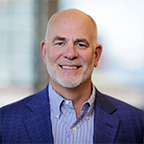What comes to mind when you think about leaving a legacy? Does it involve an inheritance? Assets you leave behind? A cause you are passionate about? A financial impact that lasts for generations?
At the Fidelity Center for Family Engagement, we say “Yes” to those questions about legacy … And we invite families to think about legacy as being more than just what assets you pass down.
“Legacy” is sometimes viewed as a grandiose or even self-serving term. So much so that my team and I shied away from using it at one time in our work with families. But it is a good word. And it can describe generations of good work and goodwill.
What makes the difference, in my experience, is how that legacy is created. When it is an individualistic pursuit, it can feel self-serving. But when we believe legacy building is a collective family activity and co-creation process, it sets our families up to have a shared vision with shared legacy outcomes—and generational closeness.
Closeness comes from active conversations
When it comes to families creating closeness through planning, the Later-in-Life Conversations Study from The Generations ProjectSM made some interesting discoveries. Two-thirds of baby boomers say they are confident that their plans will be carried out seamlessly, yet only 18% feel their plans will also create closeness in their family. And those who have the most confidence that their plans will bring closeness are having more active conversations than those who report less confidence. This effect is stronger for what we called “co-planners”—people who say “actively talking” means they have gone back and forth, co-created decisions, or changed their opinions after talking.1
The punchline is that the more we can set our families up for active conversations, the more opportunity we have to create a legacy of closeness.
So how can we expand what we talk about to build a legacy of closeness? We start by reflecting on our basic mental models (beliefs about how “things” are supposed to work) around how families co-create or co-plan together. And then we can adopt new mindsets—conscious mental models about how we engage and plan.
Here are 4 mindset shifts that can help you and your family “think about your thinking.”
1. Shift from an individual to collective mindset
If building a legacy is your individual vision and pursuit, then it will be an individual legacy, no matter how much you say, “My family and I ….” Shifting to thinking of legacy building as a collective effort makes everyone a player. It invites each family member to participate in the process and add their best thinking.
Reflective questions to talk about as a family:
- How do we want to define ourselves as a family?
- What do we want future generations to carry forward?
- What is the legacy we want for our family across generations?
2. Shift from a functional-financial to an emotional-relational mindset
Yes, there is a functional-financial part of building a legacy. And there is a shared vision with shared legacy outcomes that tap into the emotional-relational parts of who we are as a family, including our values and how passionately we feel about something. It involves sharing our personal stories and what something might mean to us—as well as how these conversations can build generational closeness in the family through time.
Reflective questions to talk about as a family:
- What are our values, passions, and wishes?
- What stories and experiences shape our interests?
- What is the generational impact of our planning on our relationships?
3. Shift from a “someday” to a “today” mindset
Legacies are often thought of as future “things” we are leaving behind. But the conversations we have every day are building our legacy. It is not about what the family will have “someday;” it is about how we are building it “today.” Talk about the topics that matter to your family right now, and those conversations will lay a foundation for your future legacy.
Reflective questions to talk about as a family:
- What topics would our family like to talk about “today”?
- How can legacy planning become a part of our ongoing conversations?
- What part of the future should we be talking about today?
4. Shift from an “all in” to a “what you can” mindset
Families sometimes have an “all in” mindset as a test of interest and loyalty—you’re either all in or you’re not committed. This is especially true around efforts led by the senior generation. But the best approach to engaging the next generation is to invite them to contribute “what you can.” They are at a different life stage with different commitments. And there needs to be a bit of “trust the process” here. Allow time and life to continue, and trust that everyone’s contribution will grow through time.
Reflective questions to talk about as a family:
- What are people’s interests at this stage of their life?
- What could we do differently to set you up to contribute at your own level?
- How could you envision your contributions in the future?
Building a legacy is a family process
A legacy of contribution and closeness is based on how you navigate the future together. It is a family process that unfolds as you engage one another with curiosity and respect around your collective passions. Talk to your family about these shifts in thinking, and begin practicing a new approach to building a legacy.




